A Reflective Essay by Neil E. Das
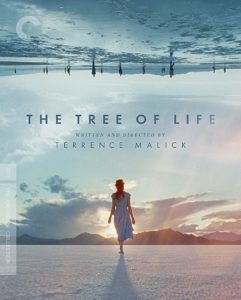
Last year, I learned that a new version of Terrence Malick’s film The Tree of Life was being released as part of the Criterion Collection. This is very pointedly being billed as a new version and not simply a director’s cut. It is forty-nine minutes longer and focuses more on the young Jack’s relationship with his father to explore elements of “toxic masculinity.”
“What’s interesting talking to Terry about this [new version of ‘Tree of Life’], I think he still doesn’t want people to think this is a better version. This is another version,” Criterion technical director Lee Kline told us earlier this month. “He said, ‘No one asked Bob Dylan to play a song the same way every night. Why should I have to make one film?’”
In light of this, I thought it would be a good idea to re-present my essay about The Tree of Life which first appeared in the now mothballed Catapult Magazine.
*****
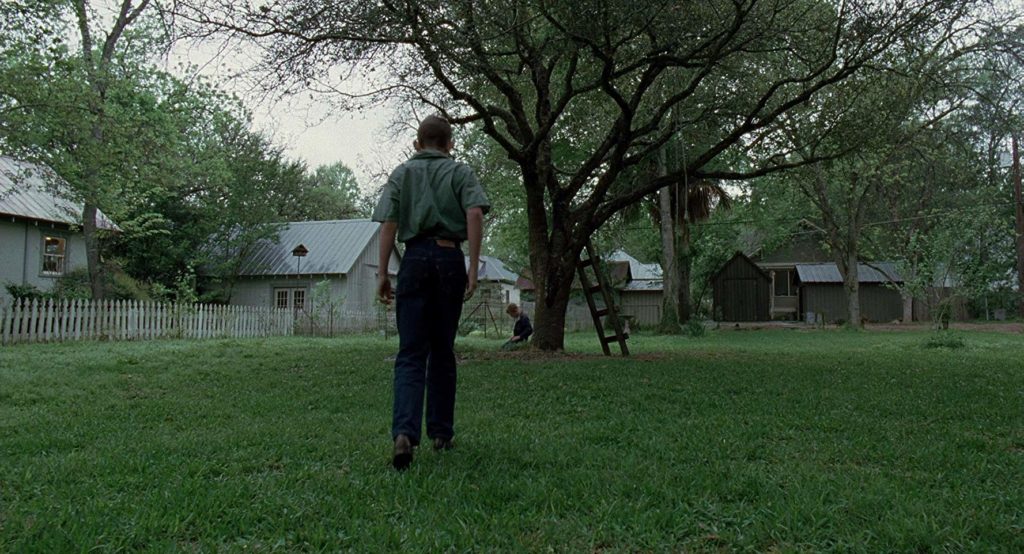
To say that Terrence Malick’s film The Tree of Life is about grief is a little like saying that Hamlet is about revenge. The statements are true enough, and yet they do not do justice to the richness of themes and majestic sweep of each of these works. Nevertheless, experiencing grief or suffering is the principal theme of The Tree of Life, and the inception, history and resolution of the central cause for grief in the film provide its structure, interwoven with amazing sequences which describe nothing short of the birth, life and death of the Earth itself.
In the very opening frame of the film, Malick provides a key for the viewer to understand how the relatively small story of the grief of a family in Texas will be interwoven with the very large story of the lifespan of the Earth by quoting from the ancient book of Job (38: 4,7):
Where were you when I laid the foundations of the earth?…
When the morning stars sang together, and all the sons of
God shouted for joy.
In a very real sense, the film which follows is largely a lengthy illustration of these words, which are the opening words in God’s response to Job concerning his complaint that he has suffered unjustly. And in the chapters of Job which immediately follow this quote, numerous images depicting the immense scope of the universe and the relative smallness of humanity flash at the reader, yes, in almost cinematic fashion. Malick, it seems, has a template.
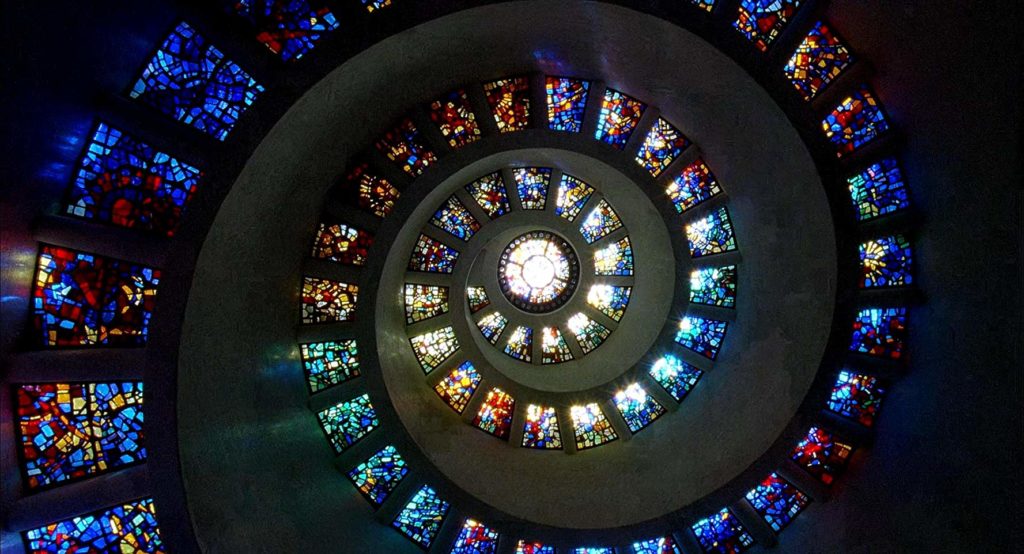
Following the quote from Job, Malick begins (and will also end) his film with what can only be described as Godlight, a flame of light pulsating against the void. And, though this may seem a rather inadequate depiction of God, it may well be pointless to protest, because whenever we come up against God and eternity, metaphor and analogy are all that we have at our disposal. Even the Christian scripture’s affirmation that “God is light,” itself, is analogy. It will not be the last time in The Tree of Life when we will be presented with scenes which may seem simple or cliché because they are so similar to scenes depicting eternity in other films. But, again, perhaps this is only so because of our stock of adequate analogies is limited in the face of eternity, even in such a rich world.
Starting from this eternal perspective, then, perhaps it is altogether appropriate that the concept of the linearity of time is not all that important in the remainder of the film; that scenes with the characters at various ages will dip in and out of each other in the telling of this “story;” that the film will make large jumps in time from an eternity past to the Texas of present times to the creation of the universe to Texas again and then to the very end of the world, when time itself is inconsequential, and then finally it will end with Godlight once again — “who was and is and is to come.” The light is there from first to last in the film, and as soon as the Earth is created, it will be seen shining through the branches of the eponymous Tree of Life in scene after scene, a symbol of the goodness of creation.
If The Tree of Life is themed on the Book of Job, its most Job-like character is who we meet first, the mother of the central character Jack. We see her in her childhood and as an adult choosing the “way of Grace” over the “way of Nature,” a recurrent theme which warrants an essay all of its own (especially as Malick, an auteur of nature, here uses the term in a negative sense to describe the exertion of power and control). She has a simple faith, believing that “all the world is shining…and love is smiling through all things.” She says to God, “I will be true to you whatever comes,” in a scene which immediately precedes the arrival of a telegram telling her of the death of her son, and her assertion is immediately tested. And, just as it was with Job, her suffering is exacerbated by well-meaning “comforters” mouthing pious platitudes and is characterized by the agonizing questions she puts to God. Anyone who has experienced tragedy knows this reaction, as doubt and mistrust creep in. What if the way of nature, indeed, is all that there is and there is no love smiling through all things?
Here at the opening, too, in the deeply lined face of a grown-up Jack, played with a blank intensity by Sean Penn, we see the effects grief can exert over time. Waking up seemingly on an anniversary date of his brother’s death, his life is one without color, full of constraining angles and lines and the sterile steel and glass of sky-scrapers. The grace of the natural world (you see how the grace vs. nature theme is a complex and contradictory one) cannot seem to enter this world. Even the “Tree of Life” of this scene is constrained in a concrete hopper within a construction zone, and yet it is still there bearing witness. This adult Jack’s voiceovers are all about detachment from God, about losing him, having once principally perceived him in and through the lives of his mother and brother. Then, in a quick scene on an immense white plain which will appear again at the end of the film, his brother whispers to him “Find me!” and we move to the next section or movement of the film.

It is the next section, however, which perhaps more than any other has most motivated people to walk out of movie houses around the country. Over ten minutes long, it presents, nearly wordlessly, the genesis of the Earth from the Big Bang to the death of the dinosaurs, with symphonic music either lilting or swelling as a soundtrack. And, yet, if one gives up on the film here, this is a sort of tragedy in its own right, because the images are jaw-dropping, eye-popping — from the clouds of nebulae, to clusters of galaxies; from the settling of matter into planets, to the cooling of the Earth and the primordial creation of cells, plants, animals. The order and template for this remarkable sequence could either be taken directly from the first chapters of Genesis or a science text on origins. For Malick, the choice appears inconsequential — take your pick, either will work. And woven through these scenes, in seemingly insignificant antiphony, the voice of the mother continues to ask her questions:
“Lord, why?”
“Where were you?”
“Did you know?”
“Who are we to you?”
“Answer me!”
I am not altogether unsympathetic toward the “cinema leavers,” as this sequence is all rather overwhelming and perplexing upon first exposure. I can only say that the images are worth the price of admission (or of your DVD or Blu-ray purchase), and that upon subsequent viewings, this section might actually seem too short. Also, if one does not at least wait out the creation sequence to get to the next section of the film depicting the life of a family in 1950s Waco, Texas, one misses some of the most beautiful and real scenes of childhood and family life we might experience outside of living them.
This is the amazing virtuosity of the next section, to which we are introduced with a close-up shot taken from within the branches of a flowering Tree of Life. It manages to capture the immense beauty to be found within and surrounding an ordinary family, living within the confines of a very ordinary town – including that town’s sorrows. Inasmuch as the previous section was a masterpiece of vast landscape (universe-scape?) photography, this section is one that beautifully captures the tiny details of life, which are truly wonders if only one stops to look — from images of sprinklers and sparklers and goldfish, to the backlit toes of a newborn baby, to boys swimming, running, riding bikes and shooting BB guns together.
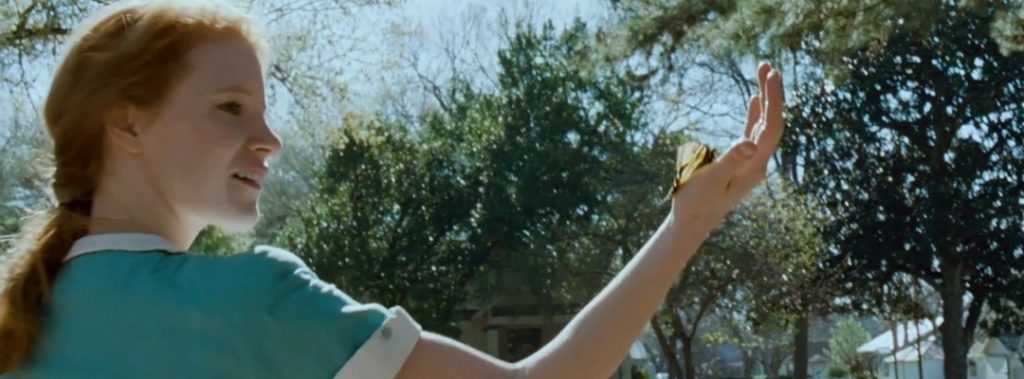
The way that these scenes and vignettes are presented have all the qualities of memory, where images flit across the mind’s eye and float together to create idealized visions or tones, either positive or negative. The way the mother is presented, especially, has this quality. She seeks out and shows the wonder of everything to her children and teaches them gently the way of grace. In counterpoint, though the father has touches of love and humanity, the stream of scenes and images about him depict the way of nature, of scrabbling for power to make sure one is not left behind. And these two antiphonal influences weave in and out scenes from the lives of the three brothers as they grow up and experience the world.
The central focus, however, is always on Jack as he progresses from possessing innocence like that of his mother to the hardness of his father, as his father’s harsh words and hypocrisy wear away at his soul. Meanwhile, his brother continues to be more like their mother — beautiful, trusting, loving. Also, we see Jack struggling with his hatred of his father and guilt from his awakening sexuality. We never see the interiority of his brother’s thoughts or how he emerges through his own adolescence because this section ends when he is still a child as the family moves away. There are intimations, though, that he will be deeply wounded as he grows. The only image we have of him is in this idealized state.
In addition to both the idyllic qualities of childhood and the family conflict presented in this section, there are also glimpses of suffering in the world at large, as we see broken men being taken to prison and a child drowned and another badly burned and the inequities between black and white. Despite its vast scope in places, however, this is not a film principally about the great amount of suffering in the world, but rather more about how we come to terms with it individually. It brings home the fact that no one is immune from suffering, as almost at the very center of the film we are presented with a remarkable sermon on the book of Job, which ends with these words:
Do you trust in God?
Job, too, was close to the Lord. Are your friends and children your security? There is no hiding place in all the world where trouble may not find you. No one knows when sorrow might visit his house, any more than Job did.
The very moment everything was taken away from Job, he knew it was the Lord who’d taken it away. He turned from the passing shows of time. He sought that which is eternal.
Does he alone see God’s hand who sees that He gives, or does not also the one see God’s hand who sees that He takes away? Does he alone see God who sees God turn His face towards him? Does not also he see God who sees God turn his back?

If this section of the film is meant to show the substrate upon which grief feeds — the glory of idealized memory and the gnawing of regret — the next section explores the possibility of whether grief may be comforted and sorrow quelled. To do so, it must take the admonition of the sermon on Job to heart and turn “from the passing shows of time” to seek “that which is eternal.”
The final section of the film takes us back to where we began with our characters, to the mother in mourning and Jack at work in his building, now traveling up, up, up in an elevator. By the time we see him come back down again, he will have been changed. And suddenly, once again, we are at the cosmic level and the Earth is pictured as being insignificantly small as a speck against our sun as it goes into supernova, destroying all life. This is followed by a catalog of images of transition to eternity — of doors being walked through in a desolate wilderness, of people rising up from graves, rising up from the depths of water to the surface, of people walking out of darkness into brilliant light. And there are scenes of people walking together in vast open spaces — a brilliant salt flat, a beach at sunset with a little Tree of Life by the water, where upon arriving Jack sinks to his knees in surrender in the surf. And in these scenes people are both old and young at almost the same moment, and some are meeting one another once again with great joy.
Then, in a key scene, Jack and his mother are seen leading his brother out of the door of their childhood home and onto the brilliant plain of eternity, letting him go on alone. Next, Jack’s mother is tended to by young women as she, too, lifts her hands in surrender and gives her son to God. Then, as if to anchor us back to the Earth, this small section of the film ends with a lovely shot of sunflowers rooted in the earth against a dimly lit sky.
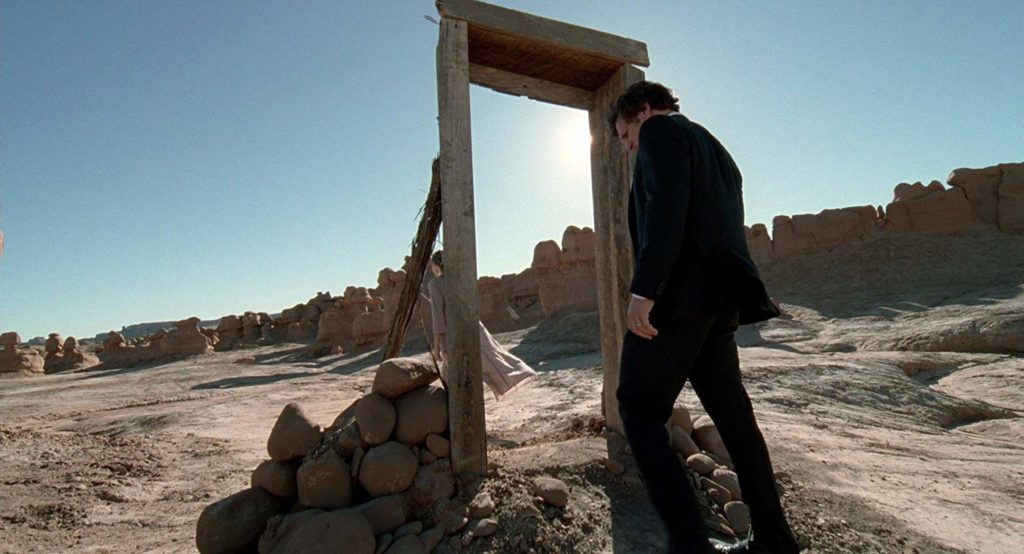
Finally, in the penultimate scene of the film, the elevator is moving down again — down from the mountaintop — and Jack walks out into the city, now transformed, with a radiant Tree of Life filling a courtyard and the clouds mirrored in beauty in the skyscrapers, and he is smiling. The DVD chapter title for this scene (which is some value added information above and beyond the theater experience) is titled “Was it a Dream?” which may well lead us to ask what exactly is happening in these final scenes? How is Jack’s (and presumably his mother’s) sadness comforted by an experience that has not even happened as yet? The answer is perhaps as perplexing and as paradoxical as the movie itself — that God does not indeed ever answer the question of “Why?” at all, but simply presents himself to us, seen in the glories of nature and his action in the world. And perhaps the eschaton — the end of all things when all manner of things will be made well — if we will let it, may work itself backwards, or we, from this end may be able to work towards it, if we accept this eternal perspective and trust God, as Job did before us.
This last interpretation is mere surmising on my part. After all¸ The Tree of Life is a piece of art and not a how-to manual for dealing with grief. But good art does speak truths to us at some level. We are not shown how many years it took for Jack to come to this new perspective; we are not even told whether the process of achieving it might not need to occur again and again. The Tree of Life simply bears witness to the possibility that those who mourn will be comforted, and that is a beautiful thing.
“Then the angel showed me the river of the water of life, as clear as crystal, flowing from the throne of God and of the Lamb down the middle of the great street of the city. On each side of the river stood the tree of life, bearing twelve crops of fruit, yielding its fruit every month. And the leaves of the tree are for the healing of the nations. No longer will there be any curse. The throne of God and of the Lamb will be in the city, and his servants will serve him. They will see his face, and his name will be on their foreheads. There will be no more night. They will not need the light of a lamp or the light of the sun, for the Lord God will give them light. And they will reign forever and ever.”
Revelation 22:1-5


